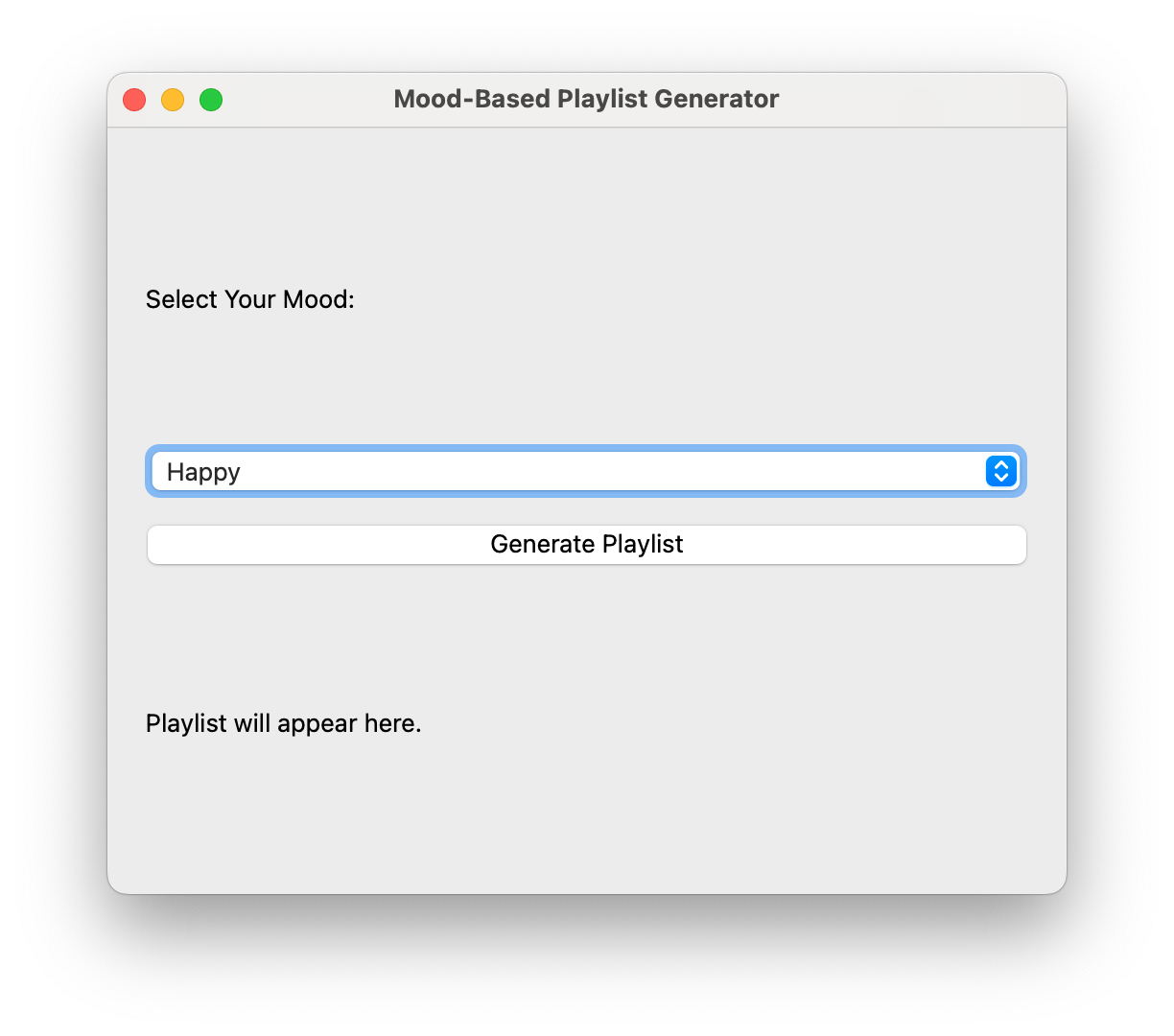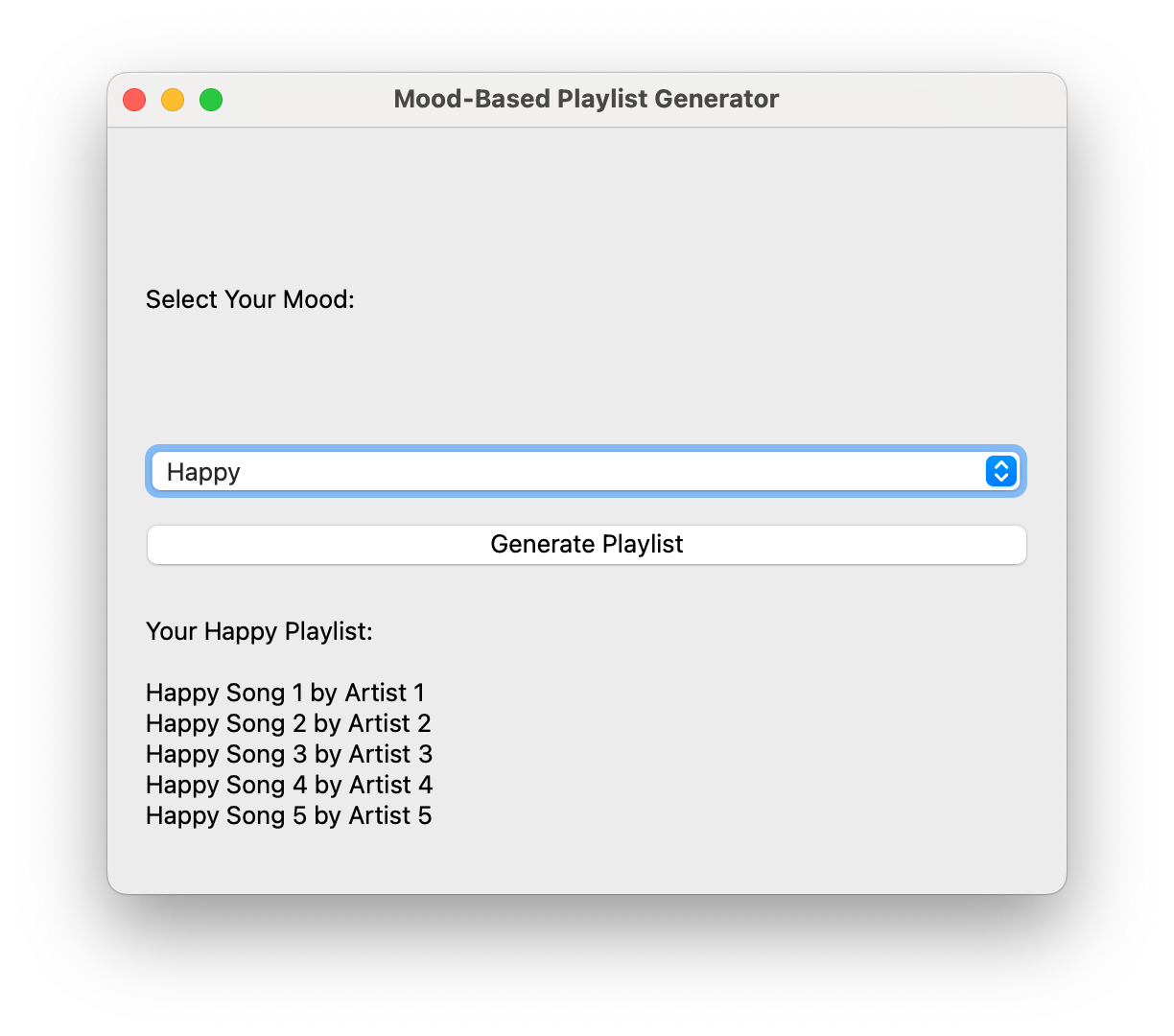Mood-Based Playlist Generator
Level: Real-World
Project Level: Real-World
This project is designed for learners who know Python fundamentals and are learning to build real-world programs.
Project Description
Today, we will build a Mood-Based Playlist Generator with Python that generates a playlist based on the user’s mood. By simply choosing from options like “Happy,” “Sad,” or “Energetic,” the app will provide a selection of songs that match that mood. The app will fetch song recommendations from a mock API (to keep it simple), and you can expand this by integrating it with real music APIs like Spotify or YouTube. We will use the PyQt6 library for this, but you can use any other GUI library
Expected Output
The GUI lets the user select their mood from a list of three moods (Happy, Sad, and Energetic).
After selecting a mood, the user can press the “Generate Playlist” button to get a recommendation of songs.
We are simplifying the code by getting the data from a dictionary stored inside the script:
playlists = {
"Happy": [
("Happy Song 1", "Artist 1"),
("Happy Song 2", "Artist 2"),
("Happy Song 3", "Artist 3"),
("Happy Song 4", "Artist 4"),
("Happy Song 5", "Artist 5")
],
"Sad": [
("Sad Song 1", "Artist 1"),
("Sad Song 2", "Artist 2"),
("Sad Song 3", "Artist 3"),
("Sad Song 4", "Artist 4"),
("Sad Song 5", "Artist 5")
],
"Energetic": [
("Energetic Song 1", "Artist 1"),
("Energetic Song 2", "Artist 2"),
("Energetic Song 3", "Artist 3"),
("Energetic Song 4", "Artist 4"),
("Energetic Song 5", "Artist 5")
]
}Prerequisites
Required Libraries: sys, random, PyQt6
pip install PyQt6
Required Files: No files are required.
IDE: Use any IDE.
Danger Zone
The solution code is hidden behind the button below. Click to reveal it.
Happy Coding!
Daily Python Projects Team




